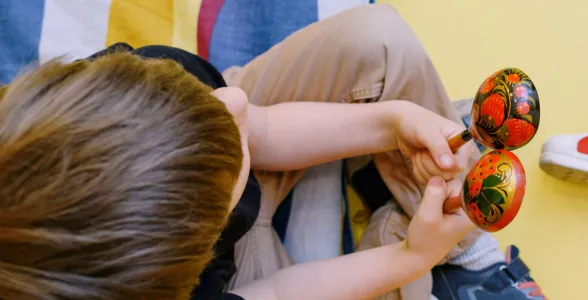
Our journey with Digital Accessibility
Over the last few years, we have been making a conscious effort to improve the accessibility of our website, emails and social media platforms. We recognise that when digital content is accessible, it benefits everyone. It is an area that many organisations are trying to improve, so we wanted to share the journey we have been on so far and what we’re planning to do in the future.
Our website
Throughout 2021, we worked with Yalla to develop a brand new website for Chiltern Music Therapy. One of the reasons we chose to work with Yalla was because they were focused on user experience and ensuring that the websites they create are accessible. During this process, Yalla introduced us to colour accessibility software where we could check that our logo and branding was fully accessible. They also used this software whilst developing our website to ensure that all of our buttons were accessible as well as matching our brand colours.
As well as building the site with accessibility in mind, we have recently added in an Accessibility Page and the ability for users to increase our text size.
Our next steps
We will be doing a full accessibility review of the website and identify any changes that need to be made. Some of the changes that we have identified so far are to:
- Add an ability to apply coloured overlay to our website pages,
- And allow users to change the website fonts for better legibility.
Chiltern Insights Group
In September 2022, we launched the ‘Chiltern Insights Group’, which is a small consultancy group of adults who are currently or have previously used our services. We are working with this group throughout our accessibility journey in order to gain feedback on our digital content. They are helping us guide where we go with accessibility and showing us where we can make changes.
Social media
We have a small team at Chiltern, which has meant we’ve only had one person looking after our communications for a number of years. Sadly, we did not have the time or resources to do this important accessibility work. However over the last year, we have invested in a larger communications team and together we have started dedicating time to improving our accessibility.
We have introduced ‘Camel Case’ to our hashtags. By using a capital letter at the start of each word, the hashtag becomes easier to read and can be seen by screen readers. We also try to put our hashtags at the end of a social media post, rather than in the middle of text, as this helps with readability. All of our social media videos now have subtitles (closed captions) and we are working on reducing levels of background music whilst people are talking on video.
When we are creating graphics for use on social media, we check them with a colour contrast checker (such as WebAIM) to ensure that the design is accessible. We are also working to keep our text on graphics to a minimum so that the information is easier to digest.
Our next steps
We know that we still have a long way to go with our social media accessibility. Going forward, we would like to make sure that all of our images include Alt Text and/or include a description of image text in our captions. We are also looking at creating ‘stripped down’ versions of our social media videos, so that we have a less stimulating option for our followers. This can be especially helpful for people who have had a brain injury.
Email newsletters
Over the last few years, we have made a lot of changes to our email newsletters. Some of these changes have been to improve accessibility.
One of the key changes we have made is ensuring our email text is on a white background. We used to send our email newsletters with white text on a dark purple background, but we received feedback that these could be difficult to read. We also try to keep our emails short and clear, so as to not overwhelm the recipients.
Our next steps
We would like to ensure that every email gives different visual content options. We would like to include video, audio, image and text so that we can meet as many of our audience’s needs as possible.
We recognise that we can always do more to improve our accessibility and to be more consistent with our changes. We are always open to receiving feedback, so if you have anything you would like to share with us then get in touch. If you’d like to learn more about digital accessibility then do follow our Digital Accessibility Month on social media throughout the month of June.
We recently received some tips and recommendations from the RNIB which you can read here.
Support our Work
Help us to provide Music Therapy to the most vulnerable and isolated members of our society
Donate here

.webp)

.webp)
.png)